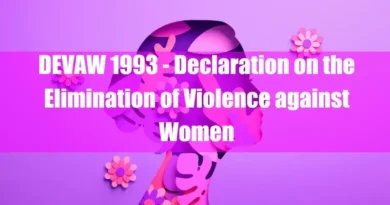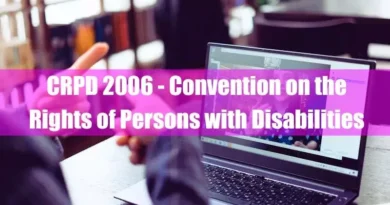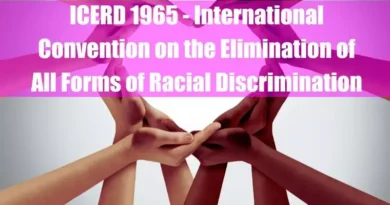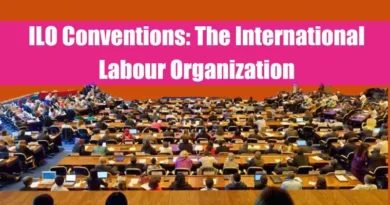I. What is the Beijing Declaration and Platform for Action (BPFA) 1995
BPFA is a landmark document adopted in 1995 that outlines a comprehensive global strategy for achieving gender equality. The BPFA identifies 12 critical areas of concern, from education and health to economic participation and violence against women. It serves as a blueprint for governments, international organizations, and civil society to work together and empower women and girls worldwide.
The 12 critical areas of concern identified by the Beijing Platform for Action (BPFA) are a comprehensive framework for addressing gender inequality and promoting women’s empowerment. Here’s the list:
- Women and poverty: This area focuses on the persistent and increasing burden of poverty on women, particularly those living in extreme poverty. It calls for action to ensure women’s equal access to economic resources and opportunities.
- Education and training of women: This area addresses inequalities and inadequacies in girls’ and women’s education and training. It emphasizes the importance of education for women’s empowerment and participation in all spheres of life.
- Women and health: This area highlights the inequalities and inadequacies in women’s access to quality healthcare services, including sexual and reproductive health and rights. It calls for action to improve women’s health outcomes.
- Violence against women: This area addresses the pervasive issue of violence against women, including domestic violence, sexual violence, and trafficking. It calls for action to prevent and eliminate violence against women and to support survivors.
- Women and armed conflict: This area focuses on the disproportionate impact of armed conflict on women and girls. It calls for action to protect women’s rights in conflict situations and to promote their participation in peacebuilding and reconstruction.
- Women and the economy: This area addresses the inequality in economic structures and policies that disadvantage women. It calls for action to ensure women’s equal participation in the economy and to promote their economic security.
- Women in power and decision-making: This area highlights the underrepresentation of women in leadership positions at all levels. It calls for action to increase women’s participation in decision-making processes.
- Institutional mechanisms for the advancement of women: This area addresses the need for strong institutional mechanisms to support gender equality and women’s empowerment. It calls for action to establish or strengthen national machinery for women’s advancement.
- Human rights of women: This area emphasizes the importance of women’s human rights as an integral part of gender equality. It calls for action to eliminate all forms of discrimination against women.
- Women and the media: This area addresses the stereotyping of women in the media and the underrepresentation of women’s voices. It calls for action to promote balanced and non-stereotypical portrayal of women in the media.
- Women and the environment: This area highlights the gender dimensions of environmental issues and the need for women’s participation in environmental decision-making. It calls for action to ensure women’s equal access to and control over natural resources.
- The girl-child: This area addresses the specific challenges faced by girls, such as discrimination, violence, and early marriage. It calls for action to protect girls’ rights and to promote their full development.
These 12 critical areas of concern remain relevant today, and the BPFA continues to be a valuable framework for action to achieve gender equality.
A. Background: The Fourth World Conference on Women
The Beijing Declaration and Platform for Action (BPfA) emerged from the Fourth World Conference on Women, a landmark event held in Beijing, China, in 1995. This conference, the largest gathering of women’s rights advocates in history, brought together over 40,000 government delegates, experts, and civil society representatives from 189 countries.
The conference aimed to build upon previous UN conferences on women’s issues held in Nairobi (1985) and Mexico City (1975), but with a renewed focus on achieving gender equality and women’s empowerment globally. The discussions and negotiations at the conference culminated in the adoption of two key documents: the Beijing Declaration, a visionary statement of principles, and the Platform for Action, a comprehensive framework for action to achieve gender equality.
B. Significance of the Beijing Declaration and Platform for Action
The BPfA is a watershed moment in the global fight for women’s rights. It is the most comprehensive international agreement ever reached on gender equality, outlining a strategic roadmap for governments, international organizations, and civil society to address critical issues that hinder women’s advancement.
The BPfA recognizes that women’s rights are human rights and that achieving gender equality is essential for peace, development, and a more just and sustainable world. It remains a vital reference point for measuring progress on gender equality. It continues to guide international, national, and local efforts to empower women and girls.
II. The Beijing Declaration

The Beijing Declaration is a powerful statement of principles that sets the foundation for the Platform for Action. It outlines the core values and commitments that underpin the global agenda for gender equality.
A. Core Principles of the Declaration
1. Equality and Human Rights:
The Declaration reaffirms that women’s and girls’ human rights are an inalienable, integral, and indivisible part of universal human rights. It calls for the elimination of all forms of discrimination against women and girls and promotes their equal participation in all spheres of life.
2. Empowerment and Participation:
The Declaration emphasizes the importance of empowering women to participate fully in political, economic, social, and cultural life. It recognizes that women’s empowerment is essential for sustainable development and peace.
3. Peace and Development:
The Declaration recognizes the link between gender equality, peace, and development. It calls for the prevention of violence against women and girls, including armed conflict, and their full participation in conflict resolution and peace-building efforts.
Also, read:
- VDPA 1993: Vienna Declaration and Programme of Action
- ICCPR 1966 – International Covenant on Civil and Political Rights
- ICESCR 1966 – International Covenant on Economic, Social, and Cultural Rights
- ICERD 1965 – International Convention on the Elimination of All Forms of Racial Discrimination
B. Commitments of the Declaration
The Declaration outlines specific commitments that governments and other stakeholders must undertake to achieve gender equality. These commitments focus on key areas that are critical for women’s advancement:
1. Eradication of Violence Against Women:
The Declaration condemns all forms of violence against women and girls, including physical, sexual, and psychological violence. It calls for governments to take comprehensive measures to prevent and eliminate violence, provide support for survivors, and hold perpetrators accountable.
2. Education and Training for Women:
The Declaration emphasizes the importance of education and training for women and girls to empower them and improve their economic and social opportunities. It calls for governments to ensure equal access to quality education for women and girls at all levels.
3. Economic Security and Poverty Eradication:
The Declaration recognizes the disproportionate impact of poverty on women and girls. It calls for governments to promote women’s economic participation and access to resources, including credit, land, and technology.
4. Healthcare and Reproductive Rights:
The Declaration affirms women’s right to control their fertility and access affordable and quality healthcare services. It calls for governments to ensure that women have access to safe and legal abortion services.
Also, read:
- UDHR – Universal Declaration of Human Rights (1948)
- CEDAW 1979 – Convention on the Elimination of All Forms of Discrimination Against Women
- DEVAW 1993 – Declaration on the Elimination of Violence against Women
- GINA – Genetic Information Non-discrimination Act 2008
III. The Platform for Action

The Platform for Action (PfA) is the operational blueprint that translates the principles of the Beijing Declaration into concrete actions. It is a comprehensive document that identifies 12 critical areas of concern that require action to achieve gender equality. Each critical area outlines strategic objectives and recommendations for governments, international organizations, civil society, and the private sector.
A. Structure and Scope of the Platform
The PfA is a lengthy document, but its structure is clear and organized. Here’s an overview:
- Introduction: Provides a brief overview of the context and objectives of the PfA.
- Strategic Objectives and Actions: The heart of the document outlines 12 critical areas of concern, each with specific strategic objectives and recommended actions for various stakeholders.
- Institutional Arrangements: Addresses the need for national, regional, and international mechanisms to monitor and review progress on implementation.
- Resource Mobilization: Highlights the importance of mobilizing resources to support the implementation of the PfA.
Also, read:
- ILO Conventions: The International Labour Organization
- CRPD 2006 – Convention on the Rights of Persons with Disabilities
- CRC 1989 – Convention on the Rights of the Child
IV. Implementation Strategies

The success of the Beijing Declaration and Platform for Action (BPfA) hinges on the effective implementation of its recommendations by various stakeholders. The PfA outlines a framework for action that assigns roles and responsibilities to different actors and proposes key strategies to achieve progress.
A. Roles and Responsibilities
1. Governments:
As the primary duty bearers, governments are ultimately responsible for implementing the BPfA. This includes:
- Enacting and enforcing laws and policies that promote gender equality.
- Allocating resources for programs that address the 12 critical areas of concern.
- Establishing national machinery and other institutional arrangements to coordinate and monitor progress on gender equality.
- Working with civil society organizations and the private sector to implement the PfA.
2. International Organizations:
International organizations, such as the UN and its agencies, are crucial in supporting national efforts and promoting global progress on gender equality. This includes:
- Providing technical assistance to governments developing and implementing gender equality policies and programs.
- Monitoring progress on the implementation of the BPfA at the global level.
- Advocating for the rights of women and girls at international forums.
- Funding initiatives that promote gender equality in developing countries.
3. Civil Society:
Civil society organizations (CSOs) are vital in holding governments accountable, promoting public awareness about gender equality issues, and mobilizing communities to take action. Key contributions of CSOs include:
- Advocating for policy change and holding governments accountable for their commitments.
- Providing services to women and girls, particularly those facing marginalization and discrimination.
- Raising public awareness about gender equality issues through education and outreach programs.
- Monitoring and reporting on progress on the implementation of the BPfA.
4. Private Sector:
The private sector has a significant role in promoting gender equality within their workplaces and through their broader business practices. This includes:
- Adopting policies that promote equal opportunities and pay for women employees.
- Investing in initiatives that empower women entrepreneurs and suppliers.
- Promoting gender equality in advertising and marketing practices.
- Collaborating with governments and civil society to address issues like workplace discrimination and violence against women.
B. Strategies for Action
The PfA outlines various strategies for action to achieve the goals outlined in the critical areas of concern. These key strategies focus on:
1. Resource Mobilization:
Mobilizing financial resources from both public and private sources is essential to support the implementation of the BPfA. This includes government budgetary allocations, international development assistance, and private-sector investment.
2. Legal and Policy Frameworks:
Developing and enforcing laws and policies that promote gender equality are fundamental to creating an enabling environment for women’s empowerment. This includes legislation addressing violence against women, discriminatory inheritance laws, and equal employment opportunities.
3. Institutional Mechanisms:
Establishing strong institutional mechanisms at national, regional, and international levels is crucial for effective coordination, implementation, and monitoring of progress on gender equality. This includes national machinery dedicated to women’s advancement, gender equality units within ministries and inter-ministerial coordination mechanisms.
4. Data Collection and Analysis:
Collecting and analyzing disaggregated data on gender equality is essential to track progress, identify gaps, and inform policy decisions. This data should cover women’s education, health, economic participation, and political representation.
Also, read:
- Explaining Quid Pro Quo Harassment Under Title IX
- Quid Pro Quo Harassment: What It Is? Know Everything
- Quid Pro Quo and Hostile Work Environment
V. Challenges and Obstacles

Despite the significant progress made since adopting the Beijing Declaration and Platform for Action (BPfA) in 1995, several key challenges continue to hinder the full realization of gender equality. These challenges are complex and interconnected, requiring sustained efforts from all stakeholders to overcome.
A. Political Will and Commitment
A critical challenge lies in ensuring sustained political will and commitment from governments to implement the BPfA. This includes allocating adequate resources, enacting necessary legislation, and holding themselves accountable for progress. Political instability, short-term priorities, and resistance from conservative forces can hinder government commitment to gender equality.
B. Resource Constraints
Limited financial resources are a major obstacle to implementing the PfA. Many governments, particularly in developing countries, struggle to allocate sufficient resources for programs that address gender equality issues. This can limit women’s and girls’ access to education, healthcare services, and economic opportunities.
C. Cultural and Social Norms
Deep-rooted cultural and social norms that perpetuate gender inequality remain a significant barrier. These norms often reinforce discriminatory practices and limit women’s opportunities in education, employment, and political participation. Changing discriminatory attitudes and beliefs requires long-term social transformation efforts.
D. Lack of Accountability
A critical challenge lies in ensuring accountability for the implementation of the BPfA. Mechanisms to hold governments and other stakeholders accountable for their commitments often need to be stronger or more present. This lack of accountability can lead to a lack of progress in achieving gender equality goals.
Emerging issues like climate change, armed conflict, and technological advancements further amplify these challenges. These factors can disproportionately impact women and girls, requiring adaptation and innovation in strategies for achieving gender equality.
Also, read:
- Fair Housing Act (FHA) of 1968
- The Equal Pay Act of 1963
- The Protect from Exploitation Act (PROTECT) 2003
VI. Achievements and Impact
Despite the ongoing challenges, the Beijing Declaration and Platform for Action (BPfA) has significantly impacted the global fight for gender equality. Here’s a look at some key achievements:
A. Progress on Gender Equality Goals
Significant progress has been made on some key goals outlined in the BPfA.
- Education: Girls’ enrollment in primary education has reached near parity with boys globally.
- Health: Maternal mortality rates have declined significantly, and access to reproductive health services has improved for many women.
- Political Participation: The number of women in parliament has increased globally, although women remain underrepresented in leadership positions.
- Economic Participation: More women are now participating in the labor force. However, they often face gender pay gaps and occupational segregation.
B. Empowerment of Women in Decision-Making:
The BPfA has played a crucial role in promoting women’s participation in decision-making at all levels. This includes increased numbers of women in government, civil society, and the private sector. Women’s voices are now more actively heard, and their perspectives are increasingly considered in policymaking processes.
C. Increased Awareness of Women’s Rights:
The BPfA has significantly raised awareness of women’s rights as human rights. This has led to increased advocacy efforts, public education campaigns, and legal reforms promoting gender equality.
Beyond these concrete achievements, the BPfA has also had a broader impact:
- Setting a Global Agenda: The BPfA remains the most comprehensive global framework for achieving gender equality. It continues to guide national and international efforts to address critical issues like violence against women, economic empowerment, and political participation.
- Mobilizing Action: The BPfA has mobilized a global movement for gender equality. It has provided a platform for collaboration and advocacy for governments, civil society organizations, and the private sector.
- Empowering Grassroots Movements: The BPfA has empowered women’s rights organizations at the grassroots level. It has provided a framework for them to hold their governments accountable and demand action on gender equality issues.
However, it is important to acknowledge that progress has been uneven across different regions and countries. Significant challenges remain, and ongoing efforts are needed to ensure that all women and girls, regardless of their background, can fully exercise their rights and reach their full potential.
VII. The Future of the Beijing Declaration and Platform for Action (BPFA)
The Beijing Declaration and Platform for Action (BPfA) remains vital in the 21st century. While adopted in 1995, its core principles of equality, empowerment, and participation continue to resonate. The BPfA provides a crucial framework for addressing new and emerging challenges that hinder gender equality, such as climate change, technological advancements, and ongoing armed conflicts.
Several new challenges require renewed focus and adaptation of strategies. Integrating gender equality into climate change responses and harnessing technology to empower women is crucial. Addressing the rise of online violence against women and ensuring their participation in the digital economy are pressing priorities.
Renewed political will and commitment from governments are essential. Increased resource mobilization, strengthened accountability mechanisms, and continued advocacy efforts by civil society are all necessary. By building on the achievements of the BPfA and addressing emerging challenges, we can create a world where all women and girls can thrive and reach their full potential.









